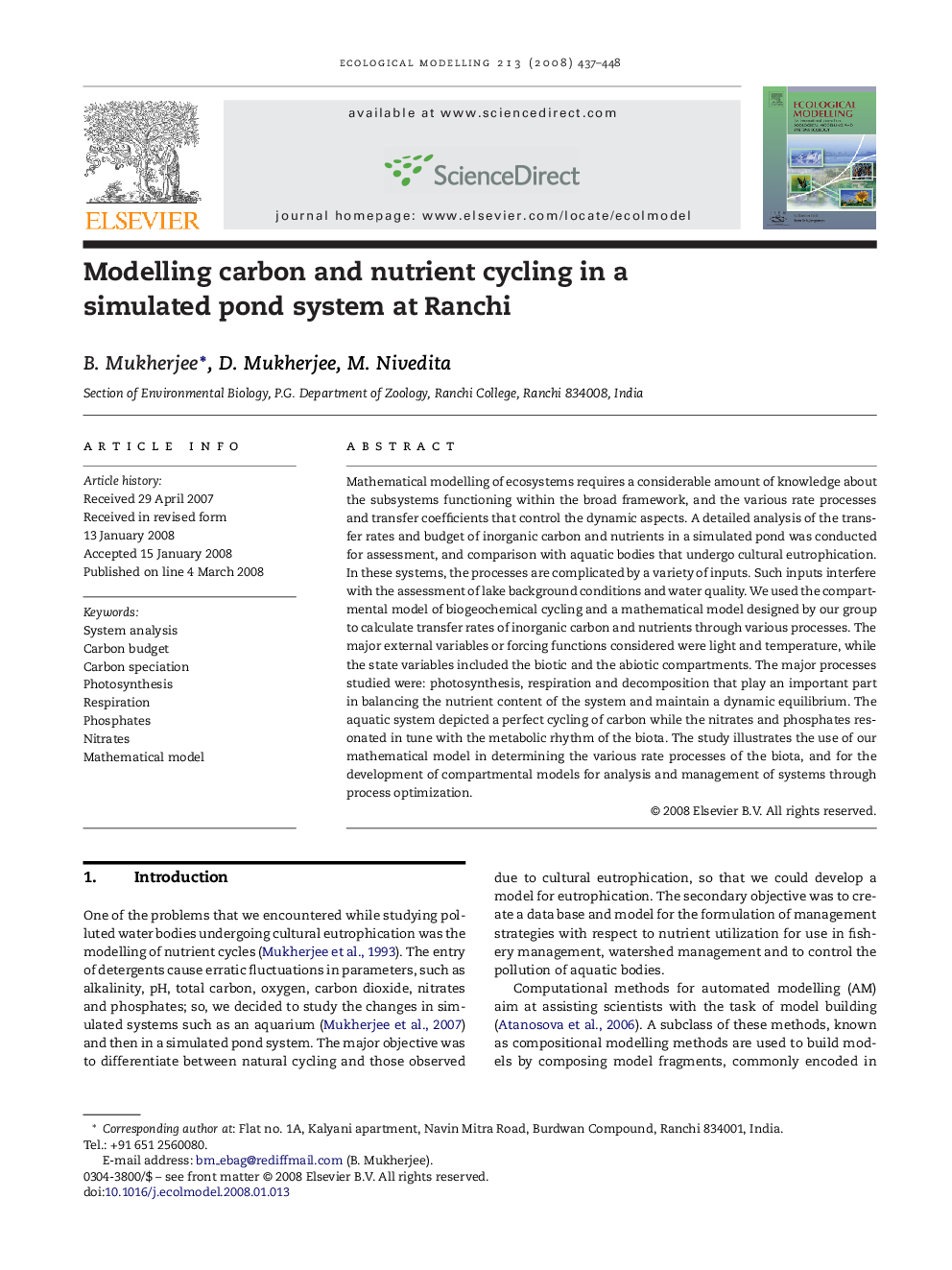| Article ID | Journal | Published Year | Pages | File Type |
|---|---|---|---|---|
| 4378219 | Ecological Modelling | 2008 | 12 Pages |
Abstract
Mathematical modelling of ecosystems requires a considerable amount of knowledge about the subsystems functioning within the broad framework, and the various rate processes and transfer coefficients that control the dynamic aspects. A detailed analysis of the transfer rates and budget of inorganic carbon and nutrients in a simulated pond was conducted for assessment, and comparison with aquatic bodies that undergo cultural eutrophication. In these systems, the processes are complicated by a variety of inputs. Such inputs interfere with the assessment of lake background conditions and water quality. We used the compartmental model of biogeochemical cycling and a mathematical model designed by our group to calculate transfer rates of inorganic carbon and nutrients through various processes. The major external variables or forcing functions considered were light and temperature, while the state variables included the biotic and the abiotic compartments. The major processes studied were: photosynthesis, respiration and decomposition that play an important part in balancing the nutrient content of the system and maintain a dynamic equilibrium. The aquatic system depicted a perfect cycling of carbon while the nitrates and phosphates resonated in tune with the metabolic rhythm of the biota. The study illustrates the use of our mathematical model in determining the various rate processes of the biota, and for the development of compartmental models for analysis and management of systems through process optimization.
Keywords
Related Topics
Life Sciences
Agricultural and Biological Sciences
Ecology, Evolution, Behavior and Systematics
Authors
B. Mukherjee, D. Mukherjee, M. Nivedita,
